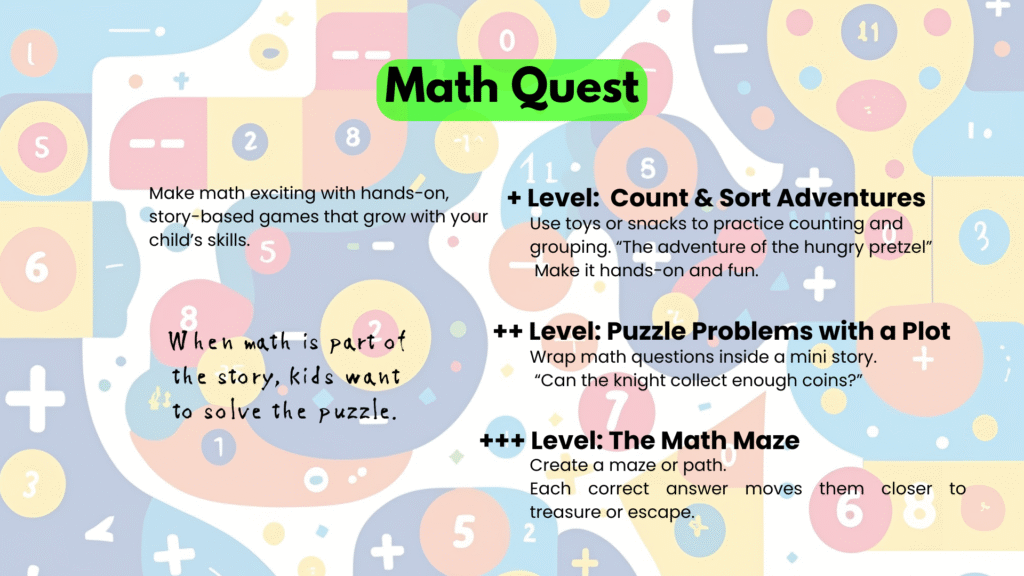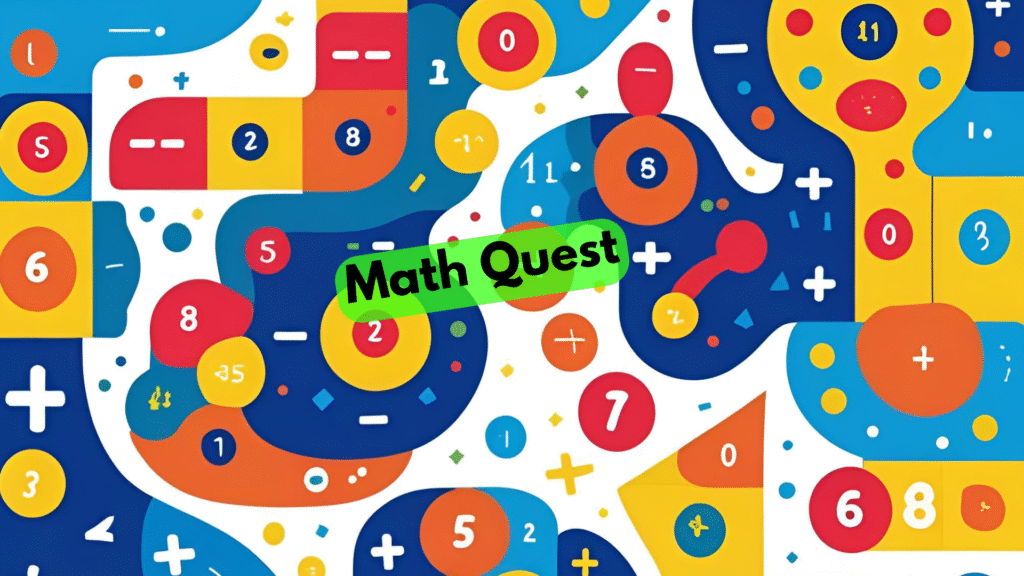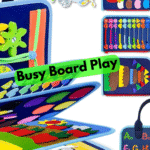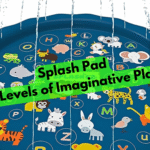Math doesn’t have to live on worksheets—it can thrive in the middle of pretend quests, snack breaks, and treasure hunts. When kids see math as part of a story or challenge, they shift from passive problem-solvers to brave explorers, decoding puzzles to move through an adventure. Math Quest is all about bringing learning to life through play.
Whether you’re introducing numbers with toys or designing a living-room maze full of addition and shapes, the key is to make math meaningful. When math is wrapped in mystery, humor, or rewards, it suddenly becomes a skill your child wants to use. Below are three progressive levels of play to help you turn everyday moments into learning-filled quests.
+ Level: Count & Sort Adventures
Objective: Use toys or snacks for hands-on shape and counting games.
Turn everyday items into math tools:
- Count goldfish crackers, blocks, or toy cars
- Sort by color, size, or shape
- Create shape “battles” (triangle vs. circle) and ask which group wins
Keep it playful and low-pressure. You’re building comfort with quantity, category, and early comparison.
++ Level: Puzzle Problems with a Plot
Objective: Introduce math as a problem-solving tool in the middle of a story.
Frame the problem like a mini adventure:
- “The knight needs 10 coins but only has 4—how many more?”
- “The robot must take 2 steps forward and 3 steps back. Where does it end up?”
- “To unlock the box, solve this shape puzzle.”
This ties math to outcomes, helping kids understand why problem-solving matters—and making the task way more fun.
+++ Level: The Math Maze
Objective: Build a physical or visual maze where the right answers guide the path forward.
Use sticky notes, chalk, or arrows on the floor. Each intersection presents a challenge:
- Solve a number sentence
- Pick the right shape to step on
- Choose the correct answer to move closer to “treasure” or the exit
Finish with a reward or reveal and celebrate the journey. This level makes math active, strategic, and adventure-driven.

Final Thought:
When math becomes a quest, kids don’t just practice skills—they become confident problem-solvers and creative thinkers. Whether it’s counting crackers or escaping the math maze, every moment can be a step toward real-life learning through play.



